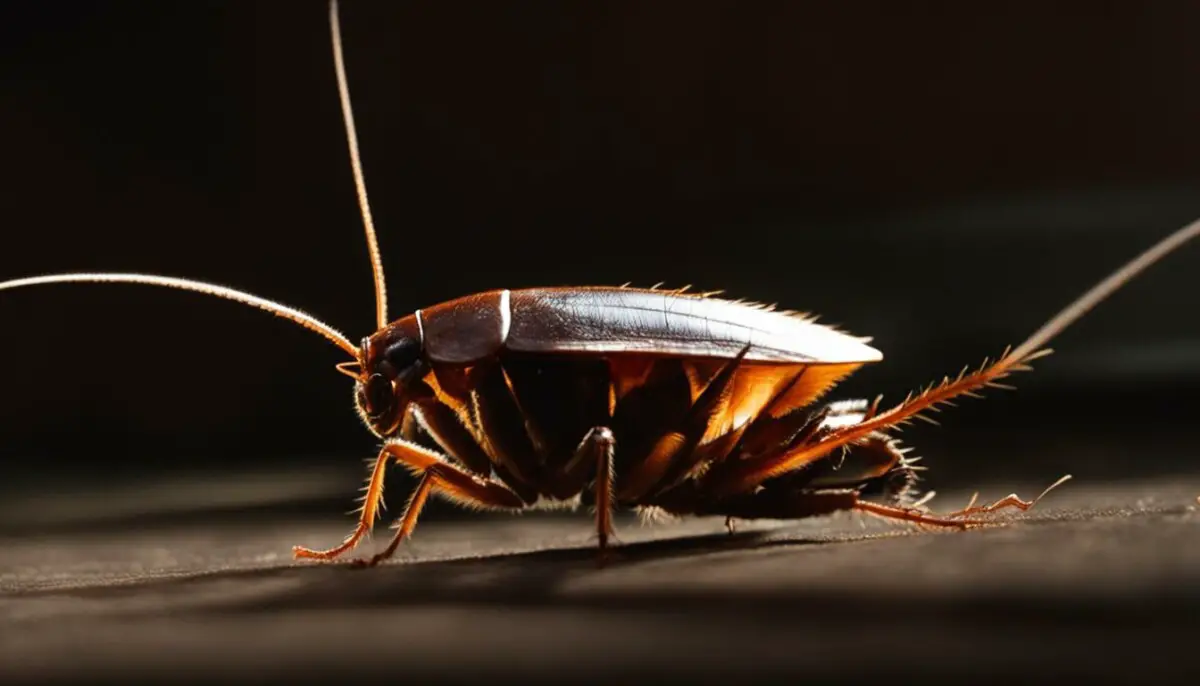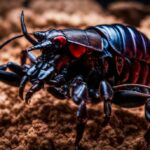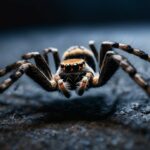Last Updated on 4 months by Francis
Have you ever wondered if cockroaches can see infrared light? These elusive creatures have remarkable survival skills and can hide in plain sight. In this article, we will explore the sensory capabilities of cockroaches and delve into their vision to uncover the truth about their ability to detect infrared light.
Contents
Key Takeaways:
- Cockroaches may not directly see infrared light, but they can sense the warmth it produces
- They have compound eyes that provide a wide field of vision
- While their vision is not as sharp as humans’, they can detect movement and changes in light
- Cockroaches are not the only insects capable of detecting infrared light
- We can use infrared cameras to detect cockroaches and target pest control efforts effectively
How Do Cockroaches Detect Infrared Light?
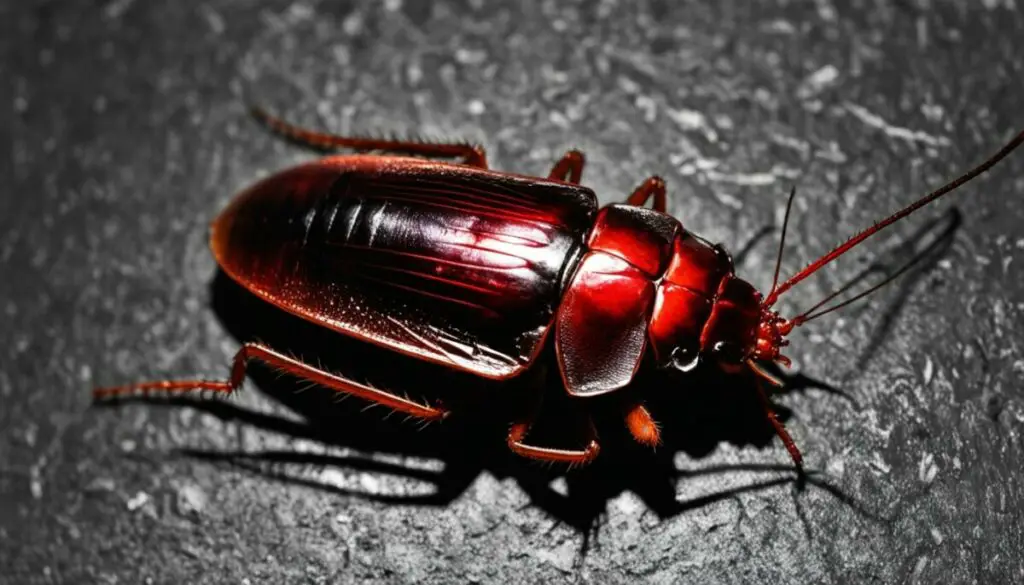
Cockroaches, known for their adaptability and ability to survive in various conditions, have intriguing sensory abilities. While they may not possess the visual capability to see infrared light directly, they have sensory organs that enable them to detect heat and navigate their environment effectively.
One of the reasons cockroaches are drawn to warm spots is because heat can improve their bodily functions. They have evolved to be sensitive to changes in temperature, including the warmth generated by infrared light. This sensitivity allows them to seek out favorable environments and locate potential food sources.
Although the exact mechanisms of infrared light perception in cockroaches are not fully understood, they possess sensory organs on their bodies that detect heat. These organs, called sensilla, are specialized structures that contain thermal receptors. When exposed to warmth or infrared radiation, these receptors send signals to the cockroach’s nervous system, alerting it to the presence of a heat source in its surroundings.
Using their sensory organs, cockroaches can effectively navigate dark and complex environments, relying on the detection of heat gradients to find their way around. This ability is particularly useful when searching for food, locating potential mates, or avoiding predators.
In summary, while cockroaches do not have the visual capacity to see infrared light, they have developed sensory organs that allow them to detect the warmth it produces. This unique ability enables them to navigate their environment efficiently and survive in various challenging conditions.
The Visual Capabilities of Cockroaches

Cockroaches, known for their resilience and adaptability, possess remarkable visual capabilities that contribute to their survival. While their eyes may not rival the acuity of humans or other animals, they possess compound eyes that provide them with a wide field of vision.
Unlike humans, cockroaches have eyes that can detect movement and changes in light, allowing them to navigate their environment effectively. Their visual perception primarily focuses on identifying potential threats, locating food sources, and finding suitable habitats.
Although specific objects and colors may not be distinguished with great precision, cockroaches rely on their visual senses to respond to changes and adapt quickly to their surroundings. This visual acumen plays a crucial role in their survival and ability to find resources in their environment.
Let’s take a closer look at the key aspects of cockroach visual capabilities:
Wide Field of Vision
The compound eyes of cockroaches provide them with a panoramic view of their surroundings, enabling them to detect movement and identify potential threats from various angles. This wide field of vision enhances their ability to escape predators and navigate complex environments with ease.
Sensitivity to Light and Movement
In addition to their wide field of vision, cockroach eyes are particularly sensitive to changes in light and movement. This sensitivity allows them to detect subtle movements, even in low-light conditions, and respond rapidly to potential dangers or opportunities.
Survival-Oriented Vision
While cockroaches may not possess the visual acuity needed for complex tasks, their vision is finely tuned for survival. They prioritize detecting and responding to threats, finding food sources, and identifying potential hiding places. This survival-oriented vision enables them to thrive in diverse environments and adapt to changing circumstances.
Image: Cockroach eyes provide a wide field of vision, enabling them to detect movement and changes in light.
Insects and Infrared Light

Cockroaches are not the only insects capable of detecting infrared light. Some other insects, such as bees and beetles, also have the ability to sense and use infrared light for various purposes. This adaptation allows them to navigate their environments and locate food sources.
Infrared light detection in insects is a fascinating phenomenon. It enables them to perceive a spectrum of light that is invisible to the human eye, giving them a unique advantage in their natural habitats. The ability to detect infrared light has evolved in insects as a survival mechanism, helping them to find food, avoid predators, and navigate their surroundings.
Bees, for example, use infrared light detection to identify flowers that are rich in nectar. The heat that is produced by the flower’s nectar guides the bees to the most rewarding sources of food. This capability not only benefits the bees but also plays a crucial role in pollination, ensuring the survival and reproduction of many plant species.
Beetles, on the other hand, use infrared light detection to locate prey. Insects emit heat, and beetles can detect the infrared radiation that is emitted by their potential prey, such as smaller insects or even warm-blooded animals. This ability allows them to hunt more efficiently and increases their chances of successful feeding.
Overall, the ability of insects to detect and utilize infrared light highlights their remarkable sensory capabilities. It is a testament to the adaptability and survival instincts of these tiny creatures, showcasing the intricate ways in which they interact with their environment.
Examples of Insects That Detect Infrared Light
| Insect | Infrared Light Detection Purpose |
|---|---|
| Cockroaches | Sensing heat for navigation |
| Bees | Identifying nectar-rich flowers |
| Beetles | Locating prey |
Image:
Using Infrared Cameras to Find Cockroaches
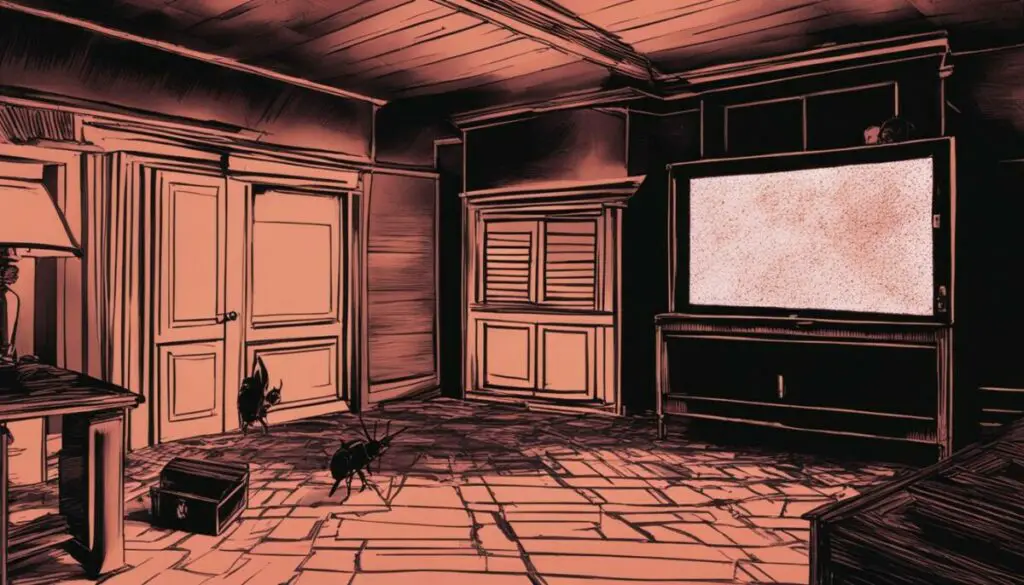
While cockroaches may not directly see infrared light, we can utilize advanced technology to detect their presence. Infrared cameras serve as invaluable tools for identifying warm spots where cockroaches are likely to congregate. This innovative method enables pest control professionals to target their efforts more effectively and eradicate infestations efficiently.
By capturing thermal images, infrared cameras can reveal hidden hotspots behind appliances, inside wall voids, or within other inaccessible areas. These warm spots are indicative of cockroach activity, allowing experts to pinpoint the most vulnerable areas for treatment.
Infrared cameras are an essential asset in the fight against cockroaches. By identifying their preferred habitats and breeding grounds, we can implement customized extermination strategies that minimize their population and prevent future infestations.
Not only do infrared cameras assist in locating cockroaches, but they also aid in assessing the extent of an infestation. By providing visual evidence of the scope and severity of the problem, these cameras guide professionals in formulating targeted treatment plans.
Advantages of Using Infrared Cameras
- Accurate detection of cockroach presence
- Identification of hidden infestation sites
- Precision in targeting treatment efforts
- Efficiency in pest control operations
- Minimization of chemical usage
The Role of Pest Control Experts
Pest control professionals play a vital role in utilizing infrared cameras effectively. Their expertise in interpreting thermal images enables them to differentiate between harmless warm spots and areas affected by cockroach infestations. Additionally, these experts possess the knowledge and experience to devise comprehensive treatment plans based on the data provided by the infrared cameras.
When it comes to eradicating cockroaches, infrared cameras are a game-changer. With their ability to pinpoint hotspots, these advanced tools enhance the efficiency and precision of pest control operations, ensuring a cockroach-free environment.
X-Ray Vision and Finding Hidden Cockroaches
Cockroaches are experts at hiding in cracks and crevices, making it challenging to detect their presence. Understanding their behavior and the layout of their environment can help us locate these hidden spaces and find hidden cockroaches.
By using our knowledge of cockroach behavior, we can imagine where these elusive pests might hide. Common hiding spots include behind appliances, in wall voids, or under furniture. These areas provide cockroaches with the darkness and protection they seek.
When searching for hidden cockroaches, it’s important to check each potential hiding place individually. Carefully inspect cracks, crevices, and dark corners, using a flashlight for better visibility. Look for signs of cockroach activity, such as fecal spots, cast skins, or egg cases.
Crack-and-Crevice Injectors
To drive cockroaches out from their hiding places, professionals may use crack-and-crevice injectors. These devices deliver targeted treatments directly into cracks and crevices, flushing out cockroaches and preventing their return. This method effectively reaches the hidden areas where cockroaches reside.
“Crack-and-crevice injectors are a valuable tool in cockroach control. They help us reach the hidden areas where these pests hide, ensuring better treatment outcomes.” – Pest Control Professional
Remember, finding hidden cockroaches requires patience and attention to detail. Be thorough in your search, and if necessary, consult a pest control professional for assistance. They have the expertise and tools to effectively locate and eliminate cockroach infestations.
| Methods for Finding Hidden Cockroaches | Pros | Cons |
|---|---|---|
| Thoroughly inspecting cracks and crevices | Effective for detecting visible signs of cockroach activity | Time-consuming and requires attention to detail |
| Using crack-and-crevice injectors | Targets hidden areas where cockroaches hide | Requires professional expertise and equipment |
| Seeking professional help | Utilizes the knowledge and experience of pest control experts | Additional cost may be involved |
By combining different methods and techniques, we can improve our chances of finding hidden cockroaches and effectively addressing infestations. Remember, early detection is key to preventing further damage and reducing the risks associated with cockroach presence.
The Importance of Fecal Focal Points
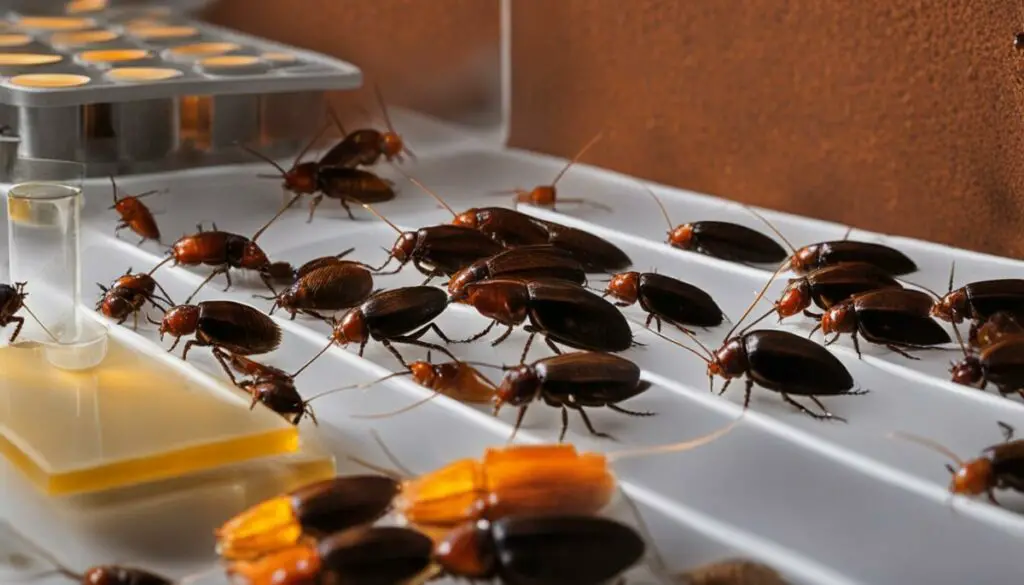
Cockroaches are gregarious insects that tend to congregate in specific areas. These areas often have an accumulation of fecal spots, which can serve as clues to their presence. By identifying these “fecal focal points,” we can pinpoint areas where cockroaches are likely to be hiding.
When cockroaches infest a space, they leave behind droppings known as fecal spots. These spots can range in size and appearance depending on the species, but they are typically small, dark, and cylindrical in shape. The accumulation of these spots is an indication of cockroach activity.
Inspecting for fecal focal points is a vital step in identifying and locating a cockroach infestation. These spots can be found in areas where cockroaches commonly traverse or congregate, such as:
- Behind kitchen appliances
- In cracks and crevices
- Near food storage areas
- In the corners of rooms
By identifying these fecal focal points, we can narrow down the search area and increase the chances of finding live cockroaches. It’s important to note that fecal spots alone may not indicate the size or severity of the infestation, but they provide valuable information for targeted pest control measures.
In addition to fecal spots, other signs of cockroach activity may include egg casings, skin castings, or a musty odor. Combining these indicators can further enhance our ability to locate and address the presence of cockroaches.
Expert tip:
“When searching for cockroaches, pay close attention to areas with fecal focal points. These spots can serve as a starting point for further investigation and treatment. Remember to use proper protective gear and consult a professional if needed.”
| Signs of Cockroach Infestation | Description |
|---|---|
| Fecal Spots | Small, dark, cylindrical droppings left by cockroaches. |
| Egg Casings | Oval-shaped casings containing cockroach eggs. |
| Skin Castings | Shed exoskeletons left behind during molting. |
| Musty Odor | A distinct smell associated with cockroach infestations. |
The Role of Cast Skins in Cockroach Detection
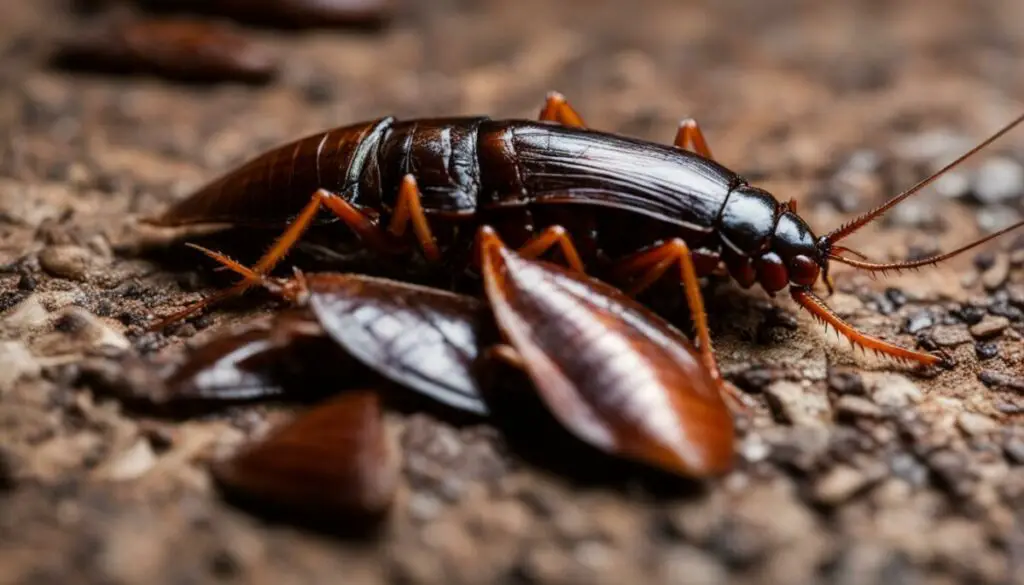
When it comes to finding cockroaches, every clue counts. One such clue that can be instrumental in identifying their presence is the cast skin they leave behind during the molting process. Cockroaches grow by shedding their exoskeleton, a process known as molting, and the discarded cast skins can be valuable indicators of active growth and the presence of nymphs.
Spotting these cast skins on the floor or other surfaces can narrow down the search area and increase the chances of finding live cockroaches. By carefully examining the cast skins, pest control professionals can determine the size and developmental stage of the cockroaches, helping them tailor their control strategies accordingly.
These cast skins can also provide insights into the extent of an infestation. A higher number of cast skins in a particular area may suggest a larger population of cockroaches and the need for more extensive control measures.
Benefits of Using Cast Skins for Detection
Using cast skins as a detection tool offers several advantages:
- Easy identification: Cast skins have a distinct appearance, making them easily distinguishable from other debris. Their translucent nature and the shape resembling an intact cockroach exoskeleton set them apart.
- Non-invasive detection: Unlike other detection methods that involve disturbing cockroaches in their hiding places, cast skins can be spotted passively, without disrupting their habitat.
- Early detection: Cast skins can serve as early warning signs of an infestation. By detecting them promptly, homeowners and pest control professionals can take immediate action to prevent the problem from worsening.
It’s important to note that cast skins alone may not provide a complete picture of a cockroach infestation. They should be used in conjunction with other detection methods and evidence, such as fecal focal points and behavioral observations, to ensure comprehensive understanding and targeted control.
Take a look at the image below to see an example of a cast skin left behind by a molting cockroach:
By recognizing the significance of cast skins and incorporating them into the detection process, individuals can enhance their ability to locate and control cockroach infestations effectively.
(TODO: Table)
Finding Cockroaches with Imagination and Patience
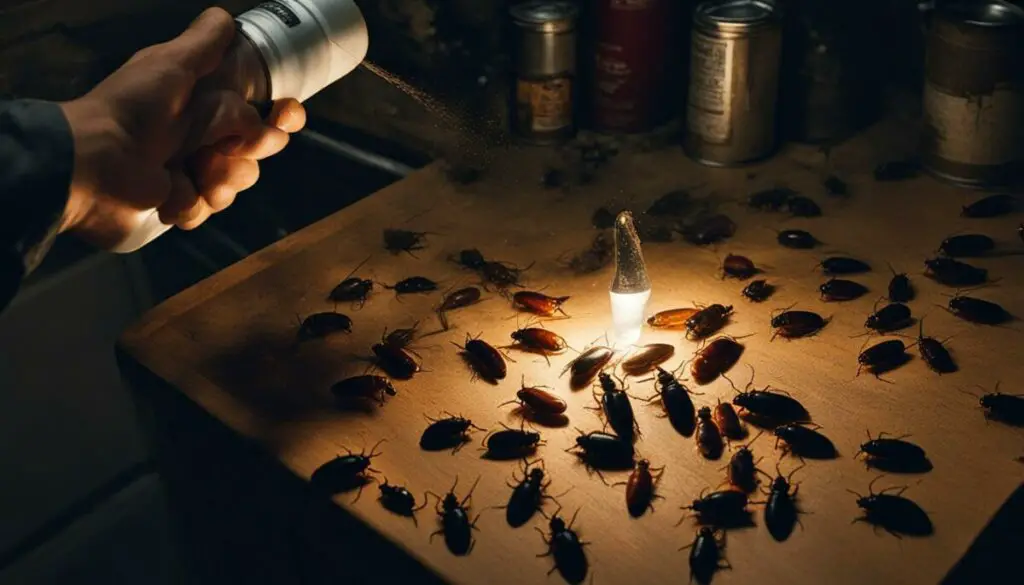
You don’t need superpowers to find cockroaches, just a bit of imagination, knowledge, and patience. By using the clues and information available, such as warm spots, hidden voids, fecal focal points, and cast skins, you can increase your chances of locating cockroach infestations and implementing effective control measures.
When searching for cockroaches, it’s important to think like one. Cockroaches are expert hiders, and they prefer dark, warm, and secluded areas. By understanding their behavior and habits, you can anticipate their hiding spots and track them down more effectively.
Imagination and Knowledge:
Imagination plays a crucial role in finding cockroaches. You need to visualize the potential hiding places based on their preferred habitats and movement patterns. Knowing their typical behavior, such as their nocturnal activity and preference for tight spaces, can help you identify areas where they are likely to be found.
For example, kitchen cabinets, cracks in walls, and behind appliances are common hiding spots for cockroaches. By imagining yourself as a clever cockroach, you can narrow down the areas to search.
Using Clues:
Clues left behind by cockroaches can greatly assist in locating infestations. Let’s explore some of these clues:
- Warm Spots: Cockroaches are attracted to warmth. Use your hand or an infrared camera to detect warm areas around your home, such as behind refrigerators or near heating vents. These spots are likely to be cockroach hiding places.
- Hidden Voids: Cockroaches love tight spaces. Pay attention to gaps and cracks in walls, floorboards, and furniture. Using a flashlight or a camera with a flash, inspect these areas and look for signs of cockroach activity, such as droppings or cast skins.
- Fecal Focal Points: Cockroaches tend to gather and leave behind fecal spots in specific areas. These spots are often dark brown or black and can be found near their hiding spots. By locating these “fecal focal points,” you can determine the main areas of cockroach activity.
- Cast Skins: Cockroaches shed their skins as they grow. Keep an eye out for these cast skins, which are typically translucent and brown in color. Finding cast skins indicates active cockroach growth and the presence of nymphs.
By utilizing these clues and combining them with your imagination, you can uncover hidden cockroach infestations and take appropriate action to eliminate them.
Remember, finding cockroaches requires patience. They are excellent at hiding, so it may take several attempts to locate their nesting areas. If you’re struggling to find and control cockroaches on your own, it may be wise to consult with a professional pest control service for effective and long-lasting results.
The Night Vision of Cockroaches
Cockroaches possess impressive night vision capabilities that enable them to navigate and find food sources even in low light environments. Researchers have made fascinating discoveries about how these resilient creatures can see in near-pitch black conditions by pooling light signals over time.
This unique adaptation allows cockroaches to effectively detect and respond to their surroundings, even when visibility is limited. Their ability to perceive their environment in the dark contributes to their survival and successful foraging.
While humans struggle to see in the dark, cockroaches have evolved a remarkable sensory system that allows them to thrive in nighttime conditions. By capitalizing on this natural advantage, cockroaches can carry out their nocturnal activities with ease and efficiency.
So, how do cockroaches pool light signals to see in near darkness? Researchers believe that specialized cells in their eyes, known as photoreceptors, play a crucial role in this process. These photoreceptors capture and accumulate small amounts of available light over time, gradually building a picture of the environment for the cockroach.
This phenomenon, referred to as temporal summation, enables cockroaches to effectively navigate their surroundings by gradually detecting the contrast between lighter and darker areas. Although their vision may not be as sharp or detailed as that of humans, cockroaches rely on this pooling mechanism to make the most of the limited light available.
By understanding the night vision capabilities of cockroaches, scientists hope to gain valuable insights into improving existing night-vision technologies. The unique adaptation exhibited by these creatures could potentially guide the development of innovative devices that enhance human sight in dark or low-light environments.
Potential Applications of Cockroach Night Vision
The study of cockroach night vision holds exciting prospects in various fields. Here are a few potential applications:
- Advancing military night-vision technology for improved surveillance and target acquisition
- Enhancing search and rescue operations in low-light or dark environments
- Improving the effectiveness of security systems and surveillance cameras
- Informing the design of autonomous robots for nighttime exploration
By harnessing the natural capabilities of cockroaches, scientists and engineers can push the boundaries of our understanding and development of night-vision technology, opening up new possibilities for enhancing human vision in challenging lighting conditions.
The Potential Applications of Cockroach Night Vision
Research into the night vision capabilities of cockroaches has the potential to revolutionize existing night-vision technologies. By studying how cockroaches pool light signals to navigate in the dark, scientists can gain insights that may lead to the development of more efficient and effective night-vision devices.
One potential application of cockroach night vision is in the field of surveillance and security. Imagine cameras that can see in near darkness without the need for artificial light sources. By mimicking the pooling mechanism used by cockroaches, these cameras could provide enhanced visibility in low light conditions, making it easier to monitor and safeguard areas and properties.
Cockroach night vision could also have implications for search and rescue operations. In challenging environments where visibility is limited, such as collapsed buildings or dense forests, the ability to see in the dark can be crucial. Incorporating the principles of cockroach night vision into rescue equipment, such as goggles or drones, could significantly improve the effectiveness and safety of search and rescue missions.
“Cockroach night vision has the potential to transform various industries, from security to search and rescue.”
Furthermore, the advancement of night-vision technology inspired by cockroach vision could have applications in the field of medical imaging. Medical professionals often rely on imaging technologies to visualize internal structures and detect abnormalities. By improving the ability to capture images in low light conditions, doctors could potentially improve the accuracy and quality of diagnostic procedures.
While there is still much to learn about the intricacies of cockroach night vision, the potential applications are vast. By tapping into nature’s remarkable adaptations, we can enhance our technological capabilities and improve our lives.
Benefits of Cockroach Night Vision Technology:
| Industry | Potential Applications |
|---|---|
| Surveillance and Security | – Enhanced visibility in low light conditions – Improvement in monitoring and safeguarding areas |
| Search and Rescue | – Increased effectiveness in challenging environments – Improved safety for rescuers and survivors |
| Medical Imaging | – Enhanced visualization and diagnostic accuracy |
Conclusion
In conclusion, while cockroaches may not possess the ability to directly see infrared light, they have developed astonishingly adaptive sensory capabilities to navigate their surroundings. Their ability to sense heat and use it as a navigational tool is remarkable. Additionally, cockroaches have impressive visual abilities, especially in low-light conditions, allowing them to detect movement and changes in light.
By leveraging various techniques such as infrared cameras, employing imagination, and exercising patience, we can effectively locate and control cockroach infestations. Infrared cameras can identify warm spots where cockroaches are likely to hide, enabling pest control professionals to target their efforts more efficiently. This, combined with the knowledge of cockroach behavior, the identification of fecal focal points, and the presence of cast skins, increases our chances of finding and addressing these infestations.
Furthermore, further research into cockroach sensory capabilities, including their vision and infrared light detection, holds promising opportunities for technological advancements. The study of cockroach night vision could potentially influence the development of more efficient and effective night-vision devices.
As we continue to explore and understand the marvels of cockroach adaptation, we can utilize this knowledge to better control and manage infestations, ensuring the well-being and health of our environments. By combining scientific insights with practical approaches, we can prevail in the ongoing battle against these resilient insects.
FAQ
Can cockroaches see infrared light?
While cockroaches may not be able to see infrared light directly, they can sense the warmth it produces.
How do cockroaches detect infrared light?
Cockroaches have sensory organs that allow them to detect heat and navigate their environment.
What are the visual capabilities of cockroaches?
Cockroaches have compound eyes that provide a wide field of vision, allowing them to detect movement and changes in light.
Can other insects detect infrared light?
Yes, some other insects like bees and beetles also have the ability to sense and use infrared light for various purposes.
How can infrared cameras be used to find cockroaches?
Infrared cameras can identify warm spots where cockroaches are likely to congregate, helping pest control professionals target their efforts more effectively.
By using knowledge of cockroach behavior and the layout of the environment, hidden spaces such as cracks and crevices can be checked individually. Crack-and-crevice injectors can also help drive cockroaches out from their hiding places.
What are fecal focal points and how do they help in finding cockroaches?
Fecal focal points are areas with an accumulation of cockroach fecal spots, which serve as clues to their presence. By identifying these points, we can pinpoint areas where cockroaches are likely to be hiding.
What role do cast skins play in cockroach detection?
Cast skins left behind after molting can indicate active growth and the presence of nymphs. Spotting cast skins on the floor can narrow down the search area and increase the chances of finding live cockroaches.
How can cockroaches be found with imagination and patience?
By using clues such as warm spots, hidden voids, fecal focal points, and cast skins, along with imagination and patience, we can effectively locate and control cockroach infestations.
Can cockroaches see in the dark?
Yes, cockroaches have impressive night vision capabilities and can see in near-pitch black conditions by pooling light signals over time.
What potential applications does cockroach night vision have?
Understanding how cockroaches pool light signals to see in the dark could lead to advancements in night-vision technology.
Is it possible for cockroaches to directly see infrared light?
No, while they can sense heat and use it as a navigational tool, cockroaches do not have the ability to see infrared light directly.

